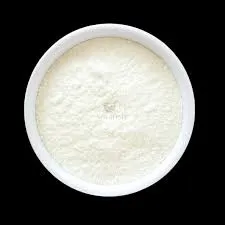
Oct . 04, 2024 13:35 Back to list
hpmc synthesis
HPMC Synthesis An Overview
Hydroxypropyl methylcellulose (HPMC) is a versatile cellulose ether that finds extensive application in various industries, including pharmaceuticals, food, and construction. The synthesis of HPMC involves a series of well-defined chemical processes that transform agricultural cellulose into a highly functional polymer. This article delves into the synthesis of HPMC, its properties, and its applications.
Chemical Overview of HPMC
HPMC is derived from natural cellulose, which is abundant in plant cell walls. The synthesis process begins with the treatment of cellulose with propylene oxide and methyl chloride. During this process, hydroxyl groups on the cellulose chain undergo etherification, resulting in the substitution of hydroxyl groups with hydroxypropyl and methyl groups. This modification enhances the solubility and adhesion properties of cellulose, making HPMC a preferred compound for various applications.
Synthesis Process
The synthesis of HPMC can be broken down into several steps
1. Cellulose Extraction The initial step involves extracting cellulose from natural sources such as wood pulp or cotton. The cellulose is purified to remove any impurities that may affect the final product's quality.
2. Etherification Reaction The purified cellulose is then subjected to etherification. In this step, the cellulose is mixed with propylene oxide and methyl chloride under controlled conditions of temperature and pressure. The ratio of these reagents can be adjusted to produce HPMC with varying degrees of substitution, impacting its physical and chemical properties.
hpmc synthesis

3. Purification and Drying After the etherification, the resulting product is a viscous slurry that contains HPMC. This mixture undergoes purification through precipitation or filtration to remove residual chemicals and unreacted materials. Finally, the purified HPMC is dried to obtain a white powder that is easy to handle and store.
4. Characterization The final step in the synthesis process is characterizing the HPMC to ensure it meets the desired specifications. This includes testing for viscosity, solubility, and molecular weight, which are critical parameters for its application.
Properties and Applications
HPMC possesses several unique properties that make it suitable for diverse applications. Its solubility in water and organic solvents, along with its thermoplastic behavior, allows it to function as a thickening agent, emulsifier, and film-forming agent. In the pharmaceutical industry, HPMC is utilized as a binder in tablet formulations, a matrix for controlled drug release, and a stabilizer in suspensions.
In the food industry, HPMC acts as a food additive, improving texture and moisture retention in products such as bakery goods and sauces. Furthermore, HPMC is commonly used in construction materials, where it enhances the workability and adhesion of cement and plaster mixtures.
Conclusion
The synthesis of HPMC is a complex but well-understood process that effectively transforms cellulose into a functional polymer with widespread utility. Its ease of modification and versatile properties make HPMC a valuable ingredient in numerous applications across various sectors. Ongoing research into improving the synthesis process and exploring new applications continues to expand the potential of HPMC in modern industry. As sustainability becomes increasingly critical, the utilization of cellulose-derived compounds like HPMC presents an eco-friendly alternative, aligning with global trends aimed at reducing the environmental impact of manufacturing processes.
-
Versatile Hpmc Uses in Different Industries
NewsJun.19,2025
-
Redispersible Powder's Role in Enhancing Durability of Construction Products
NewsJun.19,2025
-
Hydroxyethyl Cellulose Applications Driving Green Industrial Processes
NewsJun.19,2025
-
Exploring Different Redispersible Polymer Powder
NewsJun.19,2025
-
Choosing the Right Mortar Bonding Agent
NewsJun.19,2025
-
Applications and Significance of China Hpmc in Modern Industries
NewsJun.19,2025







